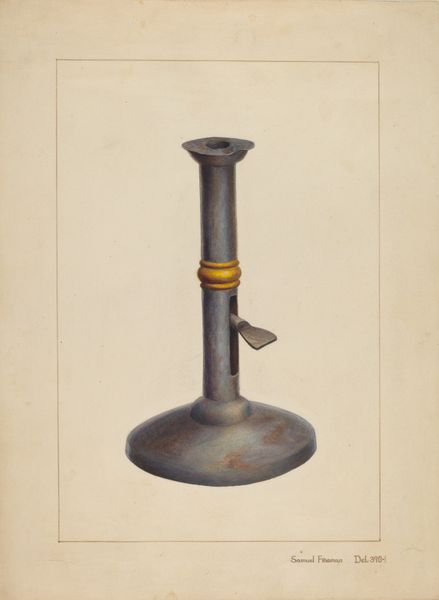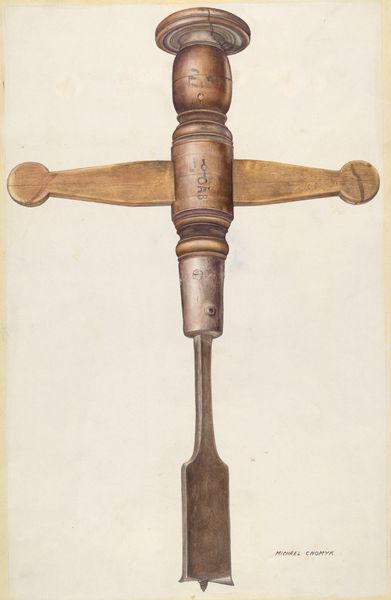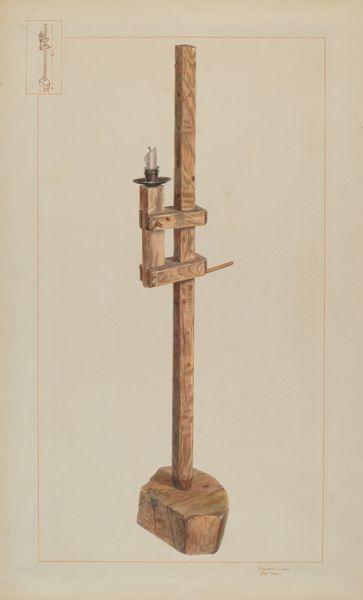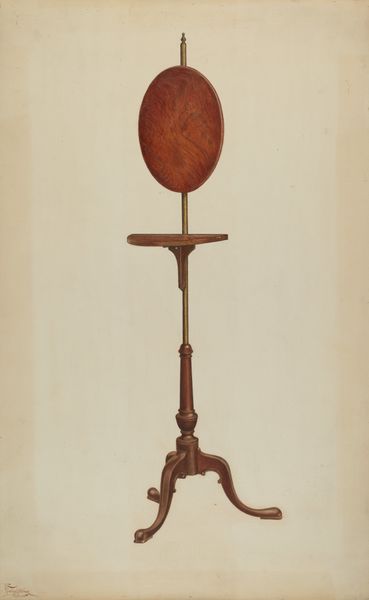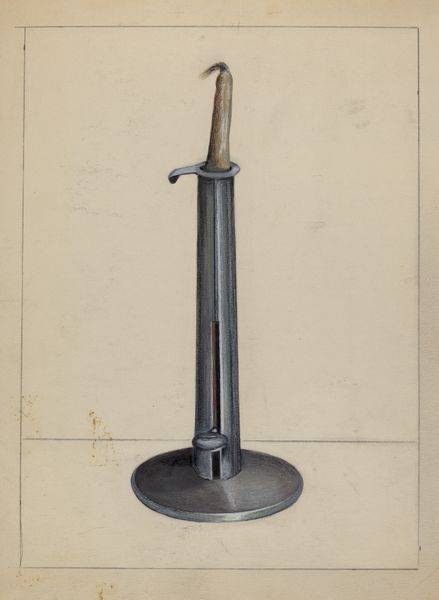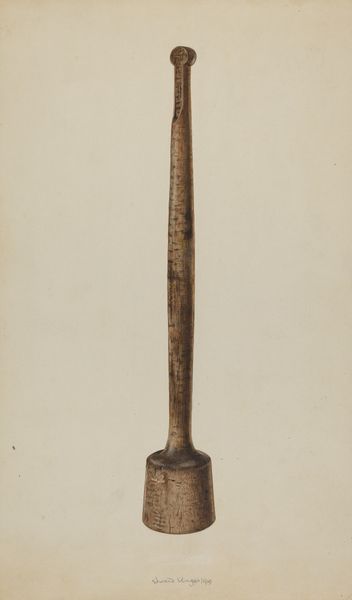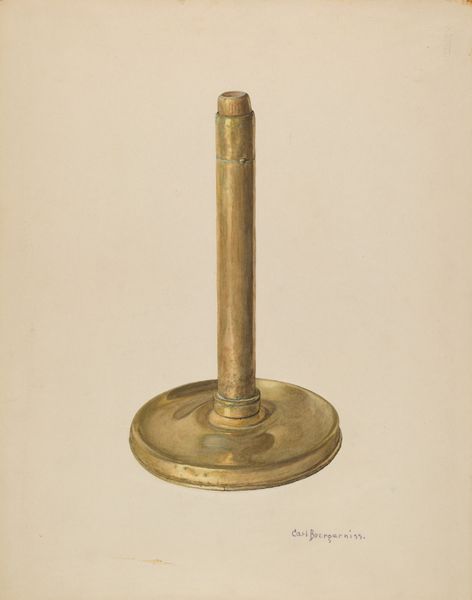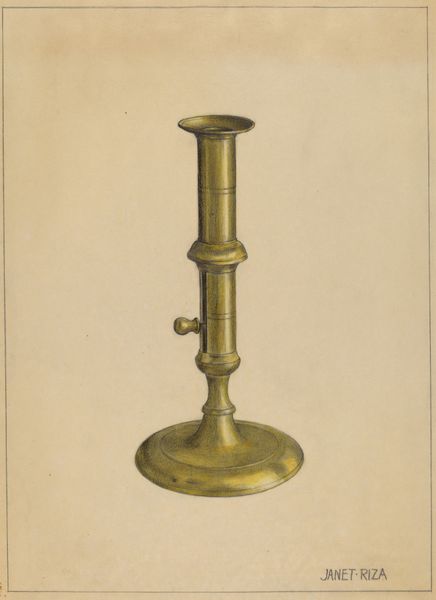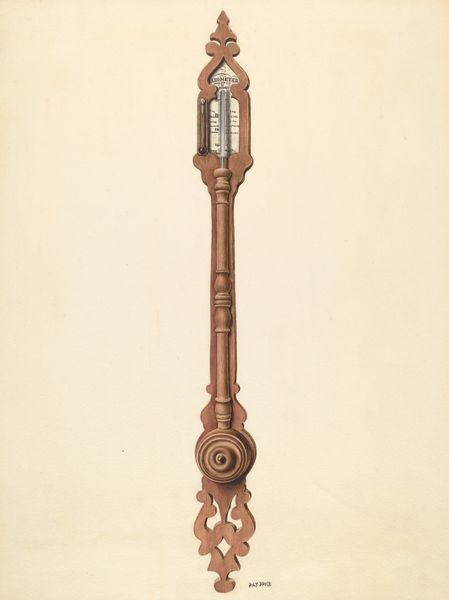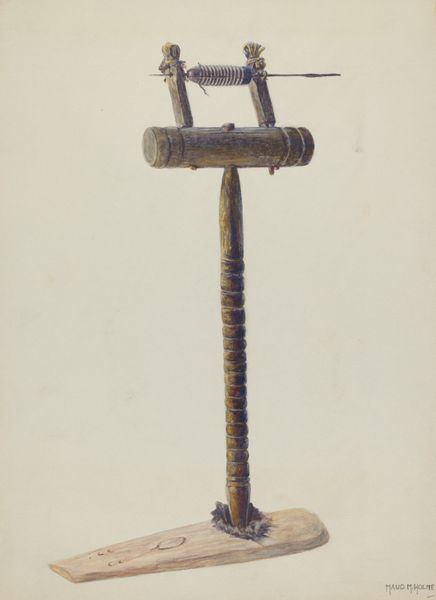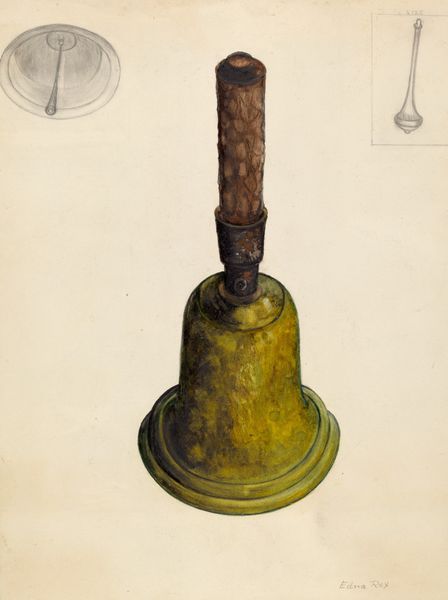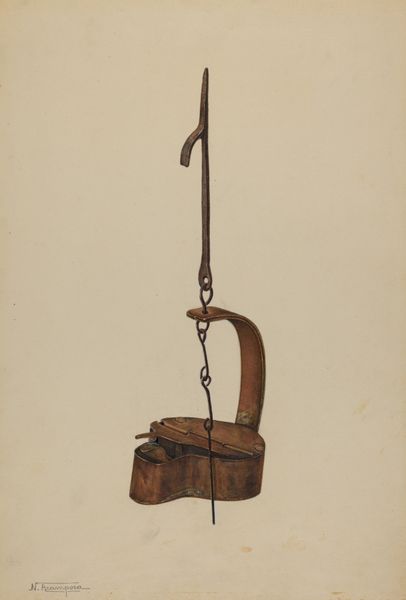
drawing, watercolor
#
drawing
#
watercolor
#
watercolour illustration
#
modernism
#
watercolor
#
realism
Dimensions: overall: 35.3 x 24.4 cm (13 7/8 x 9 5/8 in.) Original IAD Object: 17" long; 3 1/4" wide
Copyright: National Gallery of Art: CC0 1.0
Editor: Here we have "Turpentine Hack," a watercolor drawing from around 1939 by Fred Hassebrock. It’s an oddly beautiful rendition of a seemingly commonplace tool, but rendered with such care. What’s your take on it? Curator: This is an object born of labor, depicted with a stark realism that belies its humble origins. Consider the context: 1939, the tail end of the Depression. What materials would have been available to Hassebrock, and why choose to represent this particular tool? Editor: Well, it’s made for extracting turpentine, which involves a really physical, demanding process… Curator: Exactly. We’re looking at a tool used in the extraction of raw materials – turpentine from pine trees, a key ingredient in paints and varnishes. Think about the materiality of this image. Watercolour is deceptively simple, almost domestic, yet it’s depicting an object used in intensive manual labor. What is he trying to tell us about this form of labour? Is he critiquing its simplicity? Or honouring the role it plays in producing the material for artistic practice? Editor: It’s almost like he's elevating the ordinary… suggesting value where maybe others wouldn’t. Curator: Precisely. The choice of medium softens a potentially brutal object, yet the meticulous detail focuses our attention on its function. It makes one think about the economics of art production too. How accessible were the materials to the artist? How reliant was he on this type of industry? How much of the industrial process are we overlooking when enjoying artworks? Editor: So by showcasing a humble tool, Hassebrock is really forcing us to examine the entire chain of production that makes art possible. I hadn't thought of it that way. Curator: It's a potent reminder that art, at any time in history, doesn't just exist in a vacuum; that the materials and methods have social and economic weight, too. Editor: Right. It is something I should consider every time I come across an art work.
Comments
No comments
Be the first to comment and join the conversation on the ultimate creative platform.
